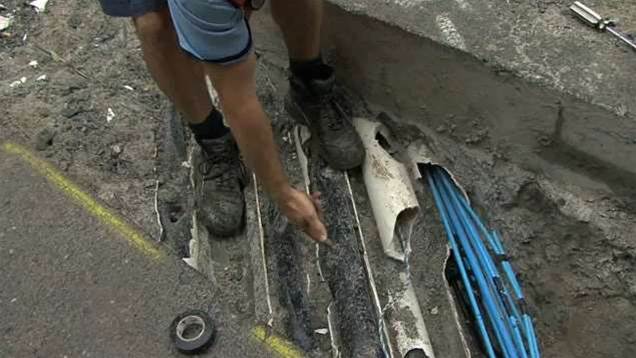
Date: 23/01/2024
Introduction:
The potential risks associated with utility strikes during excavation activities are not only significant but can also lead to substantial financial losses. In this case study review, we delve into an incident that occurred in September 2009, where an excavation led to the damage of optic fiber lines connecting Newcastle to Sydney, resulting in third-party damages totaling $900 million.
Additionally, a similar incident in February 2010 caused $800 million in damages. This review highlights the importance of implementing preventive measures and responsible excavation practices to avoid such catastrophic outcomes.
Overview:
The optic fiber communication line between Sydney and Newcastle is a critical infrastructure component, and any damage to it can have severe consequences. The case study explores the aftermath of two separate incidents where excavation activities led to significant financial losses, bringing attention to the pressing need for stringent safety measures.
Incident Details:
1. September 2009: An excavation resulted in the tearing up of optic fiber lines, causing third-party damages amounting to $900 million. The incident underscored the potential financial ramifications of utility strikes and the critical need for preventive measures.
2. February 2010: Another optic fiber was hit during excavation, leading to third-party damages totaling $800 million. The recurrence of such incidents emphasizes the urgency for industry-wide awareness and adoption of safer excavation practices.
Preventive Measures:
To avoid similar incidents and mitigate risks associated with excavation, the following preventive measures are recommended:
1. Non-destructive digging methods: Employ less destructive excavation methods such as manual digging and hand tools, especially when there is a potential for unknown utilities within a work zone.
2. DBYD/One-call system: Before initiating any excavation work, contact relevant authorities, such as the council or utility owners, through a one-call system. In Australia, the "Dial Before You Dig" service (1100) can be utilized for this purpose, while Canada and the USA have the 811 service. This ensures that all stakeholders are aware of the planned work, reducing the risk of damage.
3. Follow safety criteria: Adhere to all minimum safety criteria provided by utility owners and government organizations. This includes instructions for insurance against damages and injury, which are typically included in the responses from the one-call system.
4. Non-destructive digging methods and safety standards: Employ industry-approved non-destructive digging methods and follow all relevant safety standards to minimize the risk of damaging utility services.
5. SWMS and JSEA: Utilize Safe Work Method Statements (SWMS) and Job Safety and Environment Analysis (JSEA) provided by industry, company, manufacturers, and asset owners. These documents outline the safety procedures to be followed during excavation activities.
6. Utility locators: Use specialized equipment and personnel to identify, locate, and protect utility services before commencing any excavation work.
Conclusion:
The case study highlights the immense financial and operational consequences of utility strikes during excavation.
By implementing preventive measures such as non-destructive digging methods, adherence to safety standards, and effective communication with utility owners, the risks associated with excavation can be significantly reduced.
This case underscores the importance of a collective effort within the industry to prioritize safety and adopt responsible excavation practices.
